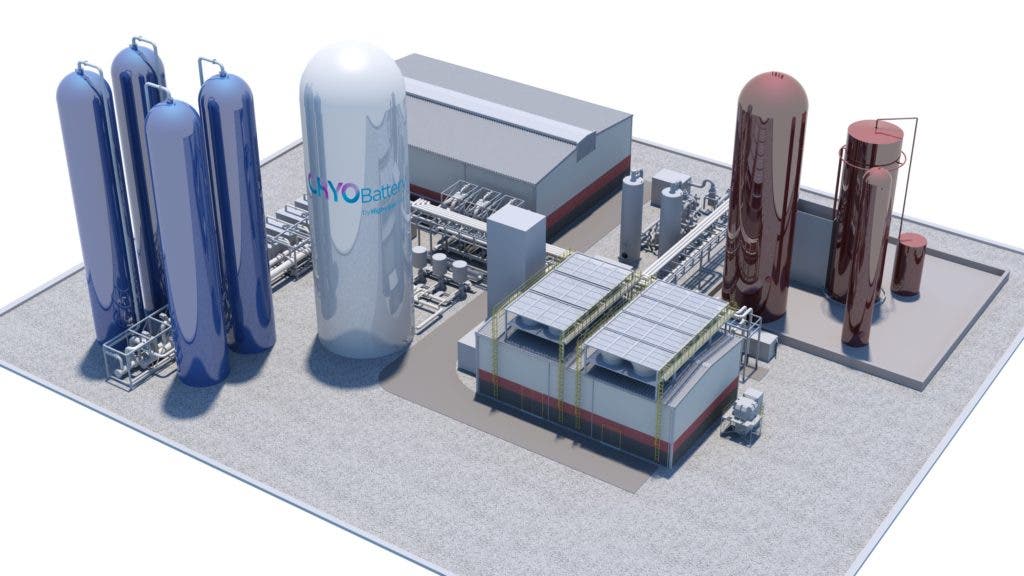Energy storage company Highview Power has announced its intention to build a cryogenic energy storage facility in the north of England, a first for the U.K.

A decommissioned power plant will be converted to house the cryobattery, according to Highview Power. After completion, the installation will have a 50 MW/250 MWh capacity (roughly as much energy as 25,000 households use in a day) that it will store without using water, toxic materials, and with no emissions. The energy to be stored here will be sourced from renewable sources, the company adds.
So how does it work?
I have bad news: there will be very little cryogenics going on at the cryobattery. In fact, no freezing or unfreezing of people is so far planned. Bummer.
However, what the battery will do is use electricity sourced from renewable sources (such as wind or solar) to compress huge volumes of air and store them in tanks. It’s a ‘cryo’ battery because there is a point, if you compress air enough, where it turns into a (very very cold) liquid; that’s the form it will be stored in. When energy is needed in the grid, the compressed air will be allowed to warm up, decompress, and escape the tanks — all while powering a turbine.
Highview Power said that they pitched the concept to the U.K. government, which is looking for ways to meaningfully reduce the country’s carbon emissions. They further note that the compressed air approach is much cleaner than conventional batteries. The cryobattery doesn’t involve the use of any toxic chemicals, it doesn’t need rare or advanced materials to be built (which means less environmental damage since you don’t need to produce and extract them), and doesn’t produce any emissions. Additionally, it can hold energy for up to several weeks at a time, which is longer than in traditional batteries.
The system is expected to boost local grid stability and reliability by storing renewable energy when bountiful, and releasing it when needed. Highview noted that the process is well-established already, having been used for natural gas storage. The company plans to build more cryogenic batteries across the U.K. in the future, and CEO Javier Cavarda said they’re also in talks with officials from Spain, South Africa, and several Middle Eastern countries.






